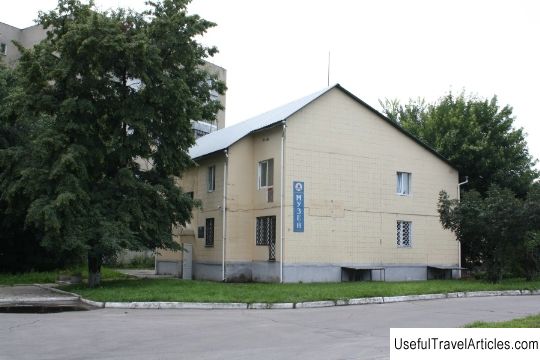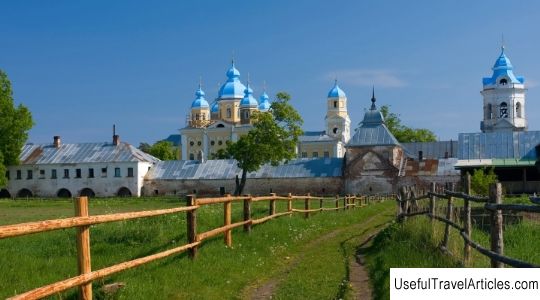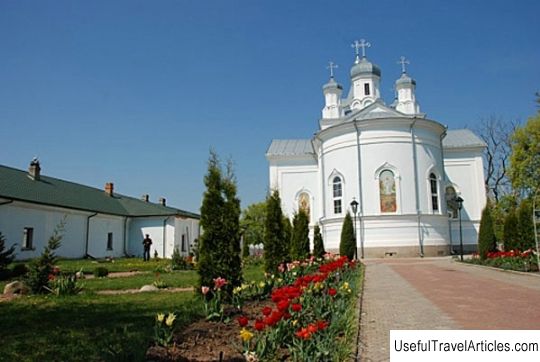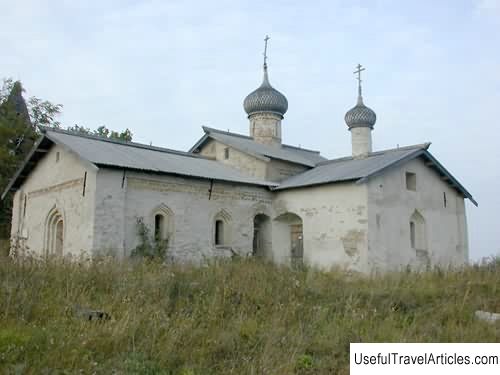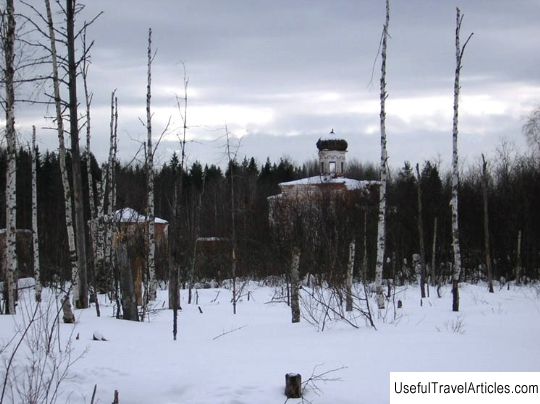Valaam Spaso-Preobrazhensky monastery description and photos - Russia - Karelia: Valaam
Rating: 8,4/10 (1243 votes) 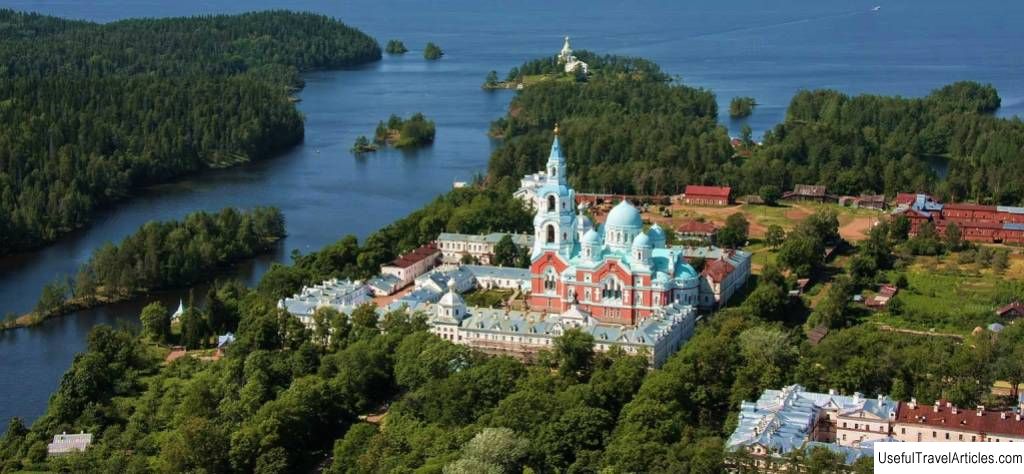
Valaam Spaso-Preobrazhensky monastery description and photos - Russia - Karelia: Valaam. Detailed information about the attraction. Description, photos and a map showing the nearest significant objects. Photo and descriptionThe legendary ancient monastery is located on the Valaam island in the middle of Lake Ladoga. This is one of the most beautiful places in Russia. The architecture of the monastery fits perfectly into the northern landscape, and the revived monastery itself is a great Orthodox shrine. History of the monasteryThe first mentions of the monastery in written sources begin in the XIV century . The history of the monastery dates back to the 10th century, when its founders - Sergius and German settled here. According to one of the versions, the name of the island "Valaam" is connected with the fact that there was a pagan temple of Veles - precisely with the aim of turning it into a Christian church, two Greek monks settled here. It is believed that the Monk Avraamy of Rostov took monastic vows in this particular monastery. In the Novgorod chronicle there is a mention of the fact that in the 12th century the relics of St. Sergius and German, saving from Swedish attacks. At first, the monastery was Trinity, but at some point - perhaps after another devastation and temporary cessation of life in the monastery - it becomes Preobrazhensky. The brightest pages in the history of the monastery are in the 16th century, when he, like the Solovki, constantly had to fight off Swedish attacks. But there was not such a powerful fortress as on Solovki, so Valaam was constantly ravaged . In the monastery, 33 monks and novices who died in one of these attacks in 1578 are venerated as holy martyrs. A few years later, all the brethren left the devastated monastery. Since 1597 it has been rebuilt again with funds, allocated by the tsar Fyodor Ioannovich . But in 1611 the monastery was again ravaged by the Swedes to the ground. The monastery buildings were burned and demolished, and a Swedish settlement was founded on this site. However, the Swedes respected the burial place of the holy founders and marked it with a chapel. Monastic life was resumed in 1717 by the decree of Peter I . It was also important for the emperor - to revive the monastery on the land that had just been liberated from the Swedes. But the real flourishing of the monastery began in the 19th century. A grandiose stone construction began here, a brick factory was set up for his needs. The growth of the monastery continued throughout the 19th century. By the revolution Valaam Spaso-Preobrazhensky Monastery is a huge economy with its own factories, gardens, farms. Pilgrims from all over Russia go to the Valaam elders for guidance and consolation. After the revolution, the monastery was on the territory of Finland , and this saved it from closing. In the 1920s and 1930s, the ruined Russian monastery became the center that attracted Russian emigration here. According to the Russian-Finnish treaty of 1940, the territory was returned to Russia - and then the monks left the monastery, taking out all the property if possible. They founded New Valaam in Finland - now this monastery also operates. And on the territory of old Valaam in the post-war years, a boarding house for disabled war veterans was created. Revival of the monastery Monastic life has resumed here since 1989 . The restoration of the monastery buildings began. Since 2005, bells have been ringing on the belfry again, the most beautiful "Valaam chant" - a special type of church singing, has been revived. Since 1992, a museum has opened here. It has two branches - one on the banks of the monastery bay in Karetny barn, and it is dedicated to the arrangement of the monastery economy in the 19th century, and the second is the Ancient storehouse, the monastery treasury in St. Vladimir's skete. The monastery has its own motor ship - "Admiral Kuznetsov", a hotel for pilgrims is open. The dairy farm has been reactivated, the first buildings of which were built in 1882. Trout is being raised again in Maly Nikonovsky Bay. In a word, now it is one of the richest and most economical modern monasteries. However, over the past two decades, the monastery has had a protracted conflict with local residents, who were literally forcibly evicted from the island. The Church sees its task in transforming Balaam into a purely monastic territory, where the presence of secular persons is limited. Transfiguration Cathedral The most important attraction of the monastery, far visible from the water, is the most beautiful Transfiguration Cathedral , built on a high mountain - the monastery calls it Favor . The first wooden cathedral was created here in 1719, and the current building was built from 1890 to 1893. This is a majestic five-domed cathedral with a pointed bell tower, built in Byzantine style. Lower Church with low vaulted ceilings, warm, consecrated in the name of Sergius and Herman of Valaam. Their relics continue to be hidden, but a shrine is arranged over their burial, which is revered as the main monastery shrine. High upper temple - Transfiguration. It was painted at the same time, at the end of the 19th century, in an academic style using paintings by famous Renaissance painters: Titian and Raphael, biblical illustrations by G. Dore and classical Russian painting by A. Ivanov and others. The murals were damaged during the Soviet era, and were restored already at the beginning of the XXI century during the revival of the monastery. Valaam icon of the Virgin A small church was erected near the cathedral at the beginning of the 20th century. Once it was Nikolskaya, and now it is dedicated to the Valaam Icon of the Mother of God . This icon is a local shrine. It was written in 1878, but then it was forgotten for many years and "regained" only in 1897. The Mother of God appeared to the sick woman and promised her healing if she would pray before this icon. But the woman did not find such an icon in the monastery, and only after a new miraculous dream was the icon found abandoned in the old sacristy of St. Nicholas Church. Since then, this image has been revered here as miraculous . The very first icon was taken to the New Valaam Monastery in Finland, but the monastery contains a list of it dating back to the early 20th century. The rest of the monastic complex is the cathedral on four sides monastery buildings . They are very simple and only set off the splendor of the main temple. Above the gate is the church of St. Peter and Paul , built at the beginning of the 19th century. At the same time, the Church of the Life-Giving Spring was built, built into one of the buildings. The stone building of the winter hotel for pilgrims has been preserved since the 19th century. The monastery complex includes the St. Andrew the First-Called , as well as the recently installed bust of Patriarch Alexy II. Not far from the entrance there is a Znamenskaya "Tsar" chapel made of Karelian marble, erected in 1862 in memory of the visit to the monastery by the royal family headed by Emperor Alexander II. Sketes on ValaamA. Gornostaev is the author of the complex All Saints Skete , surprisingly laconic and echoing in its forms with the strict coniferous forest surrounding it.Not included in the number of sketes, but in fact it is Hegumen's cemetery not far from the monastery - it is here that the legendary hegumen Damascene is buried, during which the monastery experienced its highest flourishing. The newest skete is St. Vladimir's , it was founded in 2002. His temple is completely new, but built in the traditions of ancient Russian architecture, it continues the traditions of A. Gornostaev. The patriarchal residence is located here. Interesting facts
|


































